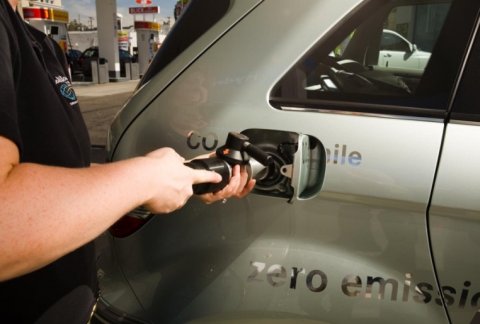One of the greatest challenges to commercial dispensing of hydrogen is in the accurate metering of the hydrogen delivered. Learn more about the safety, codes, and standards related to hydrogen dispensing including refueling protocols, purity standards, and metering requirements. Additional challenges include a low volume of manufacturers and a lack of component standardization. The U.S. Department of Energy is therefore funding research to characterize the performance and material properties of currently available hydrogen fueling hoses after extended use.1 Other delivery options such as cold, cryo-compressed delivery are also being investigated.
Notes
1 See a description of a hose testing facility at the National Renewable Energy Laboratory.


